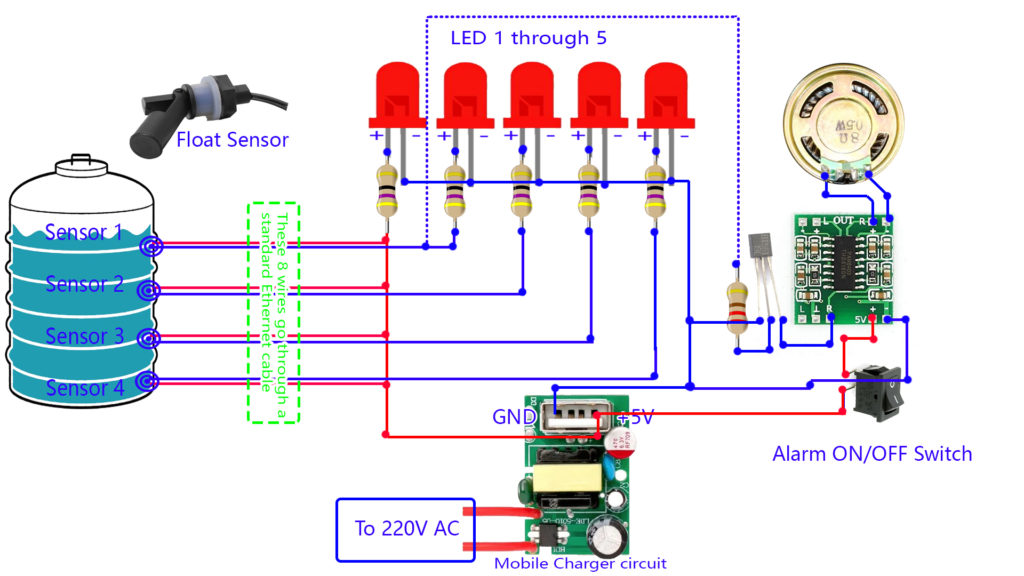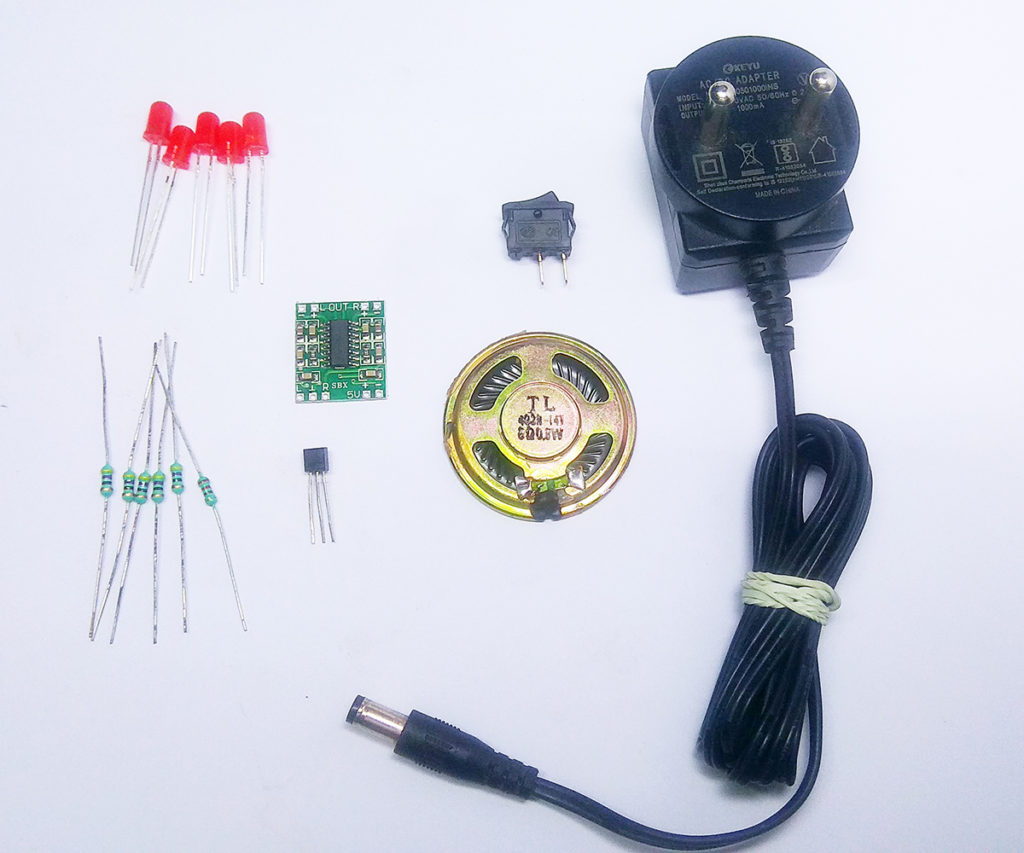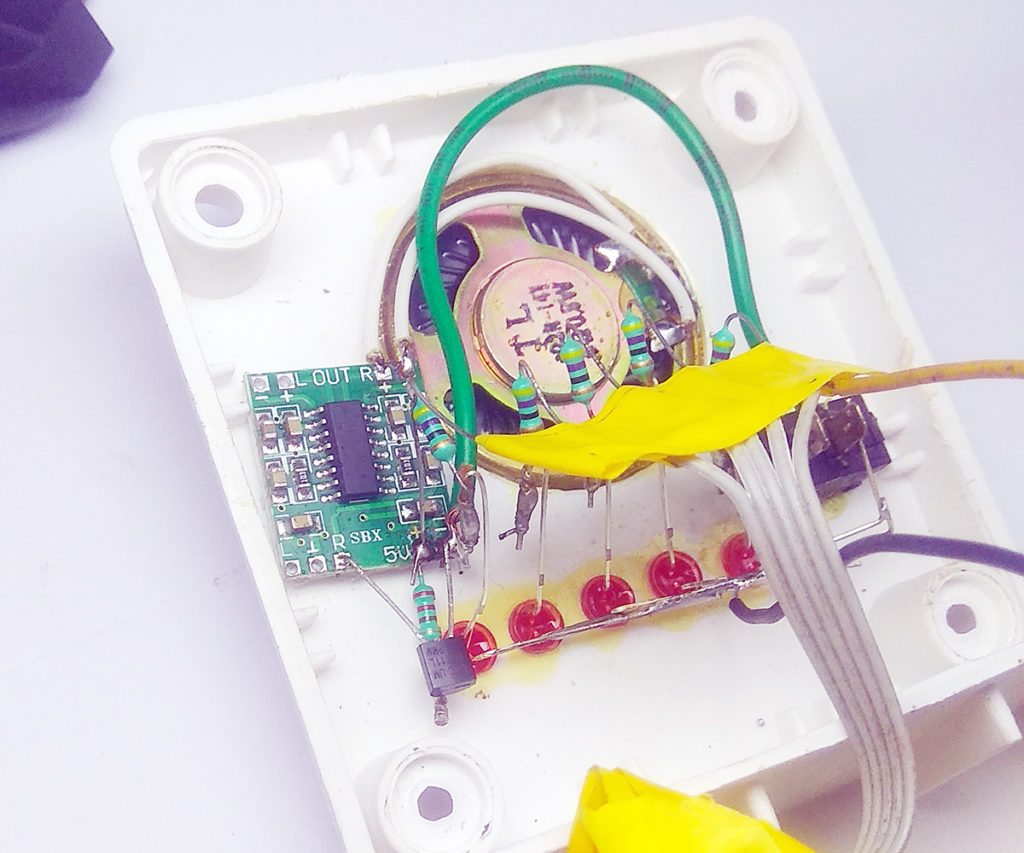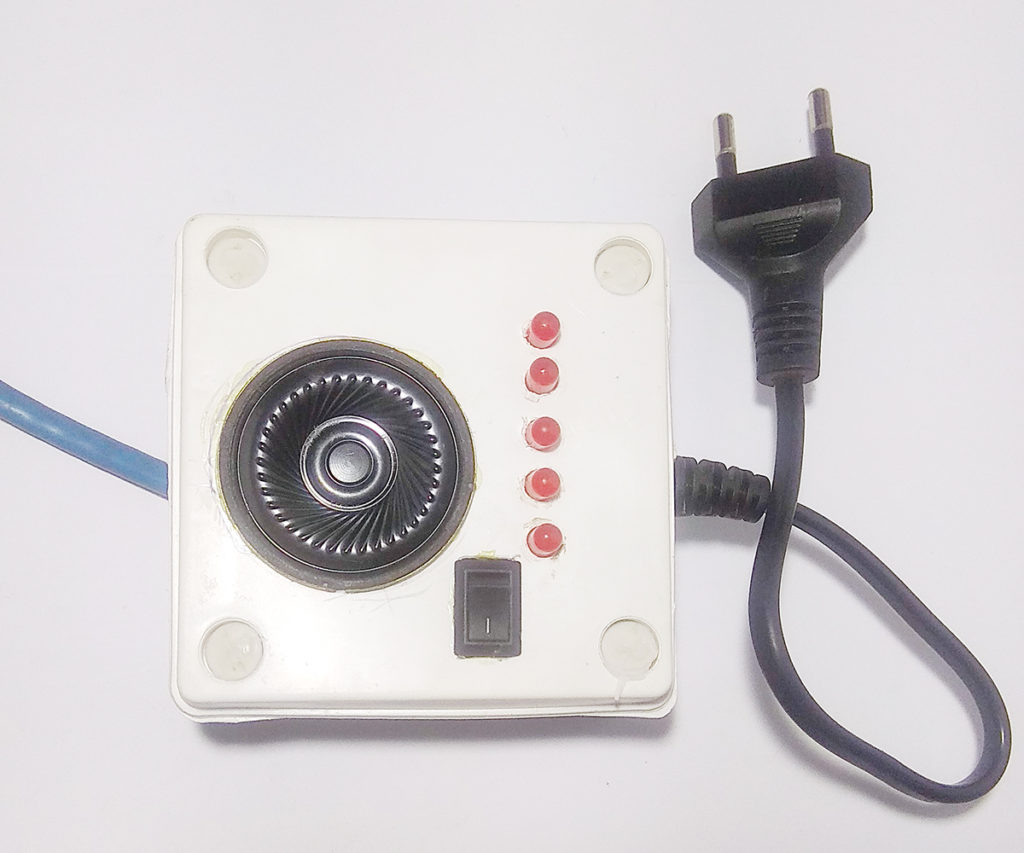Water level indicator is a very easy electronics project.
Water tank overflow as well as tank exhausting without any previous clue is a common household issue which we have to face everyday.
With an indication system of the water level in the tank, we can save a lot of efforts and the fear of running out of water while in shower.
Contents
Different Types of Water Level Indicator Circuit
There are many types of water level indicator project out there.
First, there are the simple ones that requires few wires submerged in tank at different levels and the input simply goes to a transistor to turn on an LED.
Second, the complex ones that require Arduino or other microcontroller and ultrasound sensor to accurately measure water level.
Third type of water level indicator , uses commonly available float sensors to detect the water level.
The main disadvantage of the first type is that the submerged sensor wires are prone to corrosion and calcification by the minerals present in water and because of the very low current flowing through them in liquid medium. Hence, they stop working properly after a few months or an year.
The second type project has overcome that particular problem by introducing contactless water level sensor, but using an microcontroller based circuit is costly and not beginner friendly to setup.
I tried to make a project by taking the best qualities of both types keeping the cost at minimum. So, I came out with the following circuit setup.

Water level Indicator Parts list
- Float Sensor - 4pcs (Rs. 50/pc)
- 5mm Red LED - 5pcs (Re. 1/pc)
- 47Ω resistor - 5pcs (Re.0.25/pc)
- 220Ω resistor - 1pcs (Re. 0.25/pc)
- UM66T music IC - 1pcs (Rs. 12/pc)
- PAM8403 Amplifier board - 1pcs (Rs. 15/pc)
- Small Switch - 1 pcs (Rs. 3/pc)
- 8Ω 0.5W Speaker - 1 pcs (Rs. 10/pc)
- 5V SMPS ( Extracted from old mobile charger)
- 3x3 PVC Enclosure - 1pcs (Rs. 25/pc)
- Wire - Cat5 cable (Length as required, Rs.7/mtr)
The parts cost including 10 meter wire is well under 350 rupees (4.5US$).

The components are placed and fixed with glue to the 3x3 pvc enclosure. The switch enables/disables the alarm facility which is triggered when the uppermost sensor is hit by the uprising water.
For the alarm facility, I chose not to use regular buzzers as they are not pleasant to hear regularly. The UM66T music IC provides a nice melody.
You can omit the PAM8403 amplifier board and replace with single BC548 transistor to amplify the sound, but that doesn't produce good sound.
I've tried that, and found that these cheap amplifier boards gives much louder and distortion free melody from the UM66T IC.

Installation of the sensors is a delicate work. Holes need to be be made in the PVC tank at desired levels using a drill and the sensors will be installed by screw in type threads and waterproof gasket seals.
You may need to seek help of your local plumber so that you don't accidentally make a large hole and damage the tank.
One the sensors are installed, you can connect both ends. There are 4 sensors each having 2 wires, so total 8 wires. But since all sensors have one pin connected to +5v, we have to connect actually 5 points.
I have connected the tank side sensors and circuit board assembly using a CAT5 LAN cable. They have an extra plastic jacket so they are suitable for outdoor weather conditions.

Conclusion
So, we used readily avail yet cheap float sensors as main sensing component to measure the water level.
As this is project doesn't require any microcontroller or some exotic senor, it's is quite simple to build. The whole project could be assembled even by a electronics beginner.
Leave a Reply